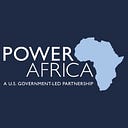Enhancing Geographic Information System Tools and Skills to Accelerate Energy Access in Côte d’Ivoire
Power Africa and CI-ENERGIES are upgrading electricity network planning and monitoring to support Côte d’Ivoire’s 2025 universal electricity access goal
Despite having one of the highest grid connection rates in West Africa, Côte d’Ivoire has a long way to go to get power to new customers — particularly in rural areas where connectivity is below 50 percent.
To achieve universal electricity access, the Government of Côte d’Ivoire developed the Electricity for All Program, or Programme Electricité Pour Tous (PEPT), to get there by 2025.
Power Africa has been working with Côte d’Ivoire to accelerate progress toward this PEPT goal.
Through a program called Connexions Plus, Power Africa and Compagnie Ivoirienne d’Electricité (CIE), one of the country’s major utilities, developed an innovative data dashboard to visualize and map areas with access gaps and accelerate electrification efforts.
Power Africa also partners with Côte d’Ivoire’s other major power utility, CI-ENERGIES to review and enhance the utility’s geographic information system (GIS) technology as a central piece of the country’s long-term energy access strategy.
Why GIS?
GIS is a powerful tool for optimal network planning and can assist in monitoring the electricity network and electrical equipment, infrastructure management, emergency response, and spatial analysis. Before this partnership, CI-ENERGIES’ expansion of the electricity network relied on a disjointed array of planning and monitoring tools and software. Power Africa audited CI-ENERGIES’ GIS technology, data, and processes to identify key areas of improvement in the planning and management of network extension across Côte d’Ivoire.
Improving Data Quality: From Pen and Paper to Digital
Power Africa worked with CI-ENERGIES to strengthen the organization’s field data collection abilities using mobile data collection software like Open Data Kit (ODK) and Qfield. This software allows high-quality data collection and visualization via tablet technology. Collecting data at the exact location of an electrical asset (like a substation or transmission tower) increases accuracy and reliability.
Field staff no longer need to carry stacks of paper, pens, clipboards, and cameras. With just a tablet, CI-ENERGIES staff can streamline their field-data collection processes and ensure a smoother transition from capturing data in the field to uploading data in the GIS.
Enhancing Data Analysis
Although CI-ENERGIES possessed a large data set that covered most of Côte d’Ivoire’s existing electrical network, information was either incomplete, redundant or lacked standardization. Power Africa helped resolve these data issues by updating incorrect data, identifying missing information, and setting up new and uniform data entry standards that streamlined data collection from the field. The newly implemented data collection software, alongside the updated data quality standards, is increasing the amount of data collected and uploaded from the field and improving confidence in the data collected.
Increasing GIS Knowledge Capacity
In GIS training sessions, Power Africa trained CI-ENERGIES staff to use the updated QGIS software, manage and analyze the database, and improve data collection techniques. Power Africa also provided trainings on how to prepare and use Qfield for data collection, and practical data collection in the field.
The Power of GIS
By using its updated centralized GIS software, putting data quality measures in place, increasing knowledge and capacity, and staying informed about new geospatial technology, CI-ENERGIES can leverage GIS technology and help Côte d’Ivoire achieve its universal access plans.
“[With this support], CI-ENERGIES will be able to expand electrification across Cote d’Ivoire in line with Programme Electricité Pour Tous efforts using GIS to identify and prioritize unelectrified areas that have the largest need, create maps that show high importance areas, catalog the quality and locations of their energy infrastructure assets, and optimize electrification expansion projects,” Jean-Francois Borget, CI-ENERGIES GIS Engineer.
